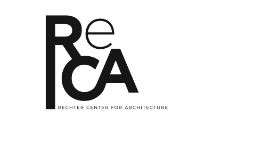The Herzliya Museum building, cast in bare concrete, embodies functional principles and an idealistic ethics of resistance to the old order. Brutalist architecture (after béton brut, literally: “raw concrete”, a term coined by La Corbusier) flourished in Israel from the 1950s to the 1970s. Besides its offering of fast and cheap construction, it was an embodiment of prevailing Israeli values at the time – namely, national fulfillment, security, direct simplicity, and material modesty.
From the outset, Singalovski has focused on an urban environment – in particular, Brutalist architecture. He tends to focus on the structure itself, and uses a technique of night photography with long exposures, that removes human movement from the frame. He avoids digital manipulation, which bestows his work with a direct validity.
Singalovski documented the southern façade of the Herzliya Museum – a less familiar part of the museum, where the building’s rear entrance is located– and reveals a new beauty and meaning in it. The photograph depicts the extension that was added to the building in 2000 (thanks to a donation by J. Alkow, during Dalia Levin’s directorship), designed by architects Yacov Rechter and his son, Amnon Rechter. The architectural style and language of the building as a whole were preserved, while adding a new, separate entrance to the Museum from the northern façade and completing the visitors’ route to a full circle, linking together all the exhibition spaces.
Singalovski focuses on the gray, material quality of the concrete and the building’s rhythmic and measured formal vocabulary. At first glance, its introverted, inward-looking and fortified appearance in relation to its immediate surroundings seems striking. As one looks more closely, however, a number of hallmarks of suburban urbanity become apparent – such as the nearby housing apartment block, across the street; diagonal bands of shadow made by white tarpaulin; the accessible railing; a security camera; a water drainage outlet; and red-and-white painted curbstones, indicating that parking is prohibited. These are all testaments to the bustling life surrounding the municipal museum, which was built in the heart of a residential neighborhood. Despite their apparent violation of the perfect concrete geometry, the presence of these signs gives the building a human dimension, combining with it to produce a new composition: blocking yet bringing closer, concealing yet inviting, temporary yet stable.
Less Reading...
